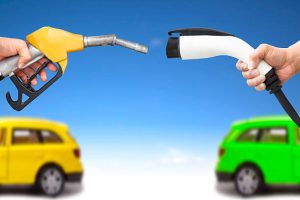When you want to improve engine performance, it can sometimes be easier than you think. To increase the power under the hood of your car, you don’t need to be a mechanic. Additionally, you don’t have to be a serious racer to desire to improve the performance of your car. More power and better performance will make your ride better wherever you go, whether you commute through the city or take your car to the track. Power increases enjoyment.
Recognize Your Engine
Understanding how your engine functions can help you choose the best strategies to improve its performance when you need to increase power. Under the hood, the basic premise is that your engine burns gasoline and air in a mixture to produce power. Your engine’s torque and horsepower will increase in direct proportion to how well it transports cold air, fuel, and exhaust in and out. Your vehicle’s ability to run depends on some seemingly insignificant modifications you make to its engine. Whether you drive a sedan or a sports vehicle, there are tools on the market that make it simpler than ever to maximize the torque and horsepower from your engine.
Examine your ignition
No matter how much fuel and air your engine has available, it won’t run properly if the cylinders don’t have the necessary spark. To get the most out of the engine, you need an ignition system that properly times the spark plugs. If you have spark mistiming, you might want to go to a mechanic because it might lead to a lot of issues.

Minor problems that can reduce the power of your engine can happen without you even realizing it, as most ignition systems won’t communicate an error code to the car’s computer unless a problem occurs. Higher voltage will be required to cause each spark plug to ignite if you utilize a leaner air/fuel mixture with a higher proportion of air. Install an amplifier on your ignition system to get the needed energy. Whether you have a distributor coil that sends power to the spark plugs via wires or a coil-on-plug system that has the connections right on the plugs will determine which type you need. The distributor system can be improved by adding new coils and single-channel amplifiers. You might require a multichannel ignition amplifier for coil-on-plug setups.
Add larger injectors and a throttle body
While the injectors deliver the ideal amount of fuel to the cylinders, the throttle delivers the necessary amount of air to the engine. Your day will be ruined by a jammed throttle or clogged fuel injectors. Look at your air and fuel delivery systems if you need to know how to boost vehicle torque.
Keep the fuel injectors clean at all times. Continually using the least expensive gas may cause deposits to build up in your fuel injectors, which will eventually reduce the power of your engine. For a vehicle that runs better, remove carbon deposits from the fuel tank, lines. This procedure is one of the simplest ways to improve engine performance. Examine the fuel supply lines as well. Larger fuel lines will probably be needed to provide the required amount of gas if the engine needs to burn more gasoline.
The quantity of air entering the engine is the other component of the air/fuel mixture. To allow more air for improved combustion, the throttle opens and closes to manage the air flow. A bigger throttle body with the proper dimensions could boost horsepower by up to 25 hp. The power of your motor can be decreased if the throttle body is too big. Balance is the secret. You can also need fuel injectors that provide more gasoline to the engine if your throttle body has to be increased. For details, consult the manuals for each new component you put in your car. Internet forums for your particular automobile type are typically very useful, too, if you wish to pursue a project like this.
Maintain Proper Compression
Your car’s engine ages as a result of wearing parts as the miles accumulate. You may experience compression pressure loss as a result of this wear, which will lower your power and performance. Without disassembling the engine, you may fix component wear and restore compression. Compression Repair helps your engine regain its previous power and compression by plugging leaks. When you drive, you’ll undoubtedly experience indications of insufficient compression.

If your car exhibits any of these classic indications of pressure loss, use Compression Repair:
Drop in gas mileage: If your gas mileage has decreased despite your continued driving practices, you may have worn engine parts that require repair.
Oil level reduction: Always check the oil when the engine is cold. The oil level in your car should be the same anytime you check it. A system leak is indicated by a declining oil level.
Blue exhaust smoke indicates compression loss in an engine, which is an indication of incomplete fuel combustion. Leaks can be fixed to regain compression.
Although your engine might not run quietly, unexpected noises point to a problem. Consider Compression Repair fluid if you hear sound along with other indications of compression decline.
You might need to convert to high octane gasoline if you have your car’s compression adjusted by a mechanic because it can compress more than lower octane fuels without harming the engine
